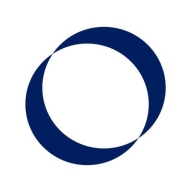


Find out what your peers are saying about Microsoft, ManageEngine, Omnissa and others in Unified Endpoint Management (UEM).
Everything we've gained from it makes my job easier day after day, and I see value in it as an engineer.
Microsoft Intune not only saves costs by reducing the number of personnel needed but also offers a comprehensive solution for managing laptops, applications, security, individual access, and enrollment.
Importantly, when someone leaves the company, it helps protect document access on their devices.
When a support ticket is submitted, it directly reaches someone with Intune support expertise.
When I contacted Microsoft, they had the same expertise, if not more, which is phenomenal because I felt heard and my problem was solved.
Sometimes, the support provided is excellent, and the representative is knowledgeable, while other times, the service needs improvement.
The customer support is frustrating and not efficient.
Support responds immediately, but I see that some engineers are new or they don't have experience collecting logs, so they take two to three days to come back.
The support side has recently become weaker compared to what it used to be with VMware.
The scalability of Microsoft Intune is ten out of ten.
Ideally, we want to automatically segregate devices based on user properties like primary use, but currently, dynamic groups seem limited to device properties.
It supports organizations with 200 endpoints and those with more than 15,000 endpoints.
Being a SaaS, Recorded Future generally does a good job in terms of scalability.
We have not experienced downtime, bugs, or glitches.
It appears Microsoft Intune undergoes changes without informing customers.
Microsoft Intune has been very stable.
Recorded Future is very stable, with a rating of nine.
Features like unlocking devices sometimes fail, and the support offered for other operating systems is insufficient.
There are communication issues, so you might start working with a feature without knowing if it will be deprecated six months from now.
Many third-party companies offer single-pane-of-glass reporting that shows you what your update environment looks like, how your patch is doing, application status, etc., but Intune's reporting is not intuitive.
The Insikt Group covers a narrow range of areas, which doesn't reflect my needs.
Another concern is that support is getting reduced by Workspace ONE; some customers are saying there are support issues on Workspace ONE right now.
The documentation is not comprehensive compared to other VMware solutions or Microsoft documentation.
Introductory professional services, like a fast-track service, were included with our E5 membership, and there have been no additional costs.
The Intune suite and add-ons, such as batch management and remote help, are costly.
It costs approximately forty euros per user per month.
Recorded Future is expensive, with a personal rating of eight for cost.
Intune excels in configuration and compliance management for Windows 10, ensuring devices receive timely updates and adhere to organizational standards.
Dynamic groups allow us to set conditions for automatic membership, eliminating the need for user intervention or manual review and ensuring a seamless workflow.
Windows Autopatch is the most valuable because it removes the burden of patch management.
Having a layer of intelligence within my SIEM that reflects in Recorded Future, and being able to enrich the data at my SIEM, offers various angles that I wouldn't be able to see without it.
In UEM, the most helpful part of Windows Management is the baseline policy and central script; using this, you can replace all the AD GPO policy.
In terms of assessing the capability of Workspace ONE UEM in maintaining compliance across all endpoints, that's a very handy feature set.
| Product | Market Share (%) |
|---|---|
| Microsoft Intune | 32.6% |
| Workspace ONE UEM | 13.7% |
| ManageEngine Endpoint Central | 10.7% |
| Other | 43.0% |
| Product | Market Share (%) |
|---|---|
| Recorded Future | 14.6% |
| CrowdStrike Falcon | 7.9% |
| ThreatConnect Threat Intelligence Platform (TIP) | 5.6% |
| Other | 71.9% |
| Product | Market Share (%) |
|---|---|
| Workspace ONE UEM | 13.7% |
| Microsoft Intune | 32.6% |
| ManageEngine Endpoint Central | 10.7% |
| Other | 43.0% |



| Company Size | Count |
|---|---|
| Small Business | 116 |
| Midsize Enterprise | 46 |
| Large Enterprise | 152 |
| Company Size | Count |
|---|---|
| Small Business | 2 |
| Midsize Enterprise | 3 |
| Large Enterprise | 9 |
| Company Size | Count |
|---|---|
| Small Business | 41 |
| Midsize Enterprise | 21 |
| Large Enterprise | 57 |
Microsoft Intune provides centralized management of mobile devices and applications, ensuring security, compliance, and productivity through integration with Microsoft services like Microsoft 365 and Azure Active Directory.
Organizations use Intune for managing mobile devices and applications, enhancing security and compliance across platforms. With features like single sign-on, conditional access, and zero-touch deployment via Autopilot, it facilitates efficient operations. Intune's scalability, easy enrollment, and capabilities such as remote wipe support diverse device management, offering robust data protection and efficient operation. Despite its features, improvement areas include reporting, compatibility with non-Microsoft devices, and better support for macOS and Linux devices.
What are the key features of Microsoft Intune?
What benefits should users look for in reviews?
In industries such as finance, healthcare, and education, Microsoft Intune is implemented to ensure secure and compliant device management. Companies leverage its capabilities to deploy security policies and manage both corporate-owned and BYOD environments, facilitating a unified approach to data protection and compliance.
Recorded Future is a powerful and effective cyber threat intelligence (CTI) platform that aims to empower administrators to protect their organizations from threats, both known and unknown. The machine learning engine that Recorded Future utilizes can process the same amount of data that 9,000 analysts working five days a week, eight hours a day for an entire year can process. It simplifies threat detection and remediation so that organizations can focus on other tasks.
Recorded Future Benefits
Some of the ways that organizations can benefit by choosing to deploy Recorded Future include:
Recorded Future Features
Some of the many features Recorded Future offers include:
Reviews from Real Users
Recorded future is a solution that stands out when compared to its top competitors. Two major advantages it offers are the threat research tools that it provides and the threat monitoring capabilities that it enables users to leverage.
A security operations lead at a comms service provider writes, “Recorded Future covers a lot of different use cases. For example, we are using it for threat intelligence research. We do use the tool to make active research on what is found around the threat. We look at patterns, for example, and see what can be elaborated on from that.”
They also write, “We can also use it for active monitoring in the customer interface. We can monitor the business side of a campaign. We can monitor for specific threats or market activity on the dashboard. We can develop queries to run in a continuous mode in order to get the best reviews.”
VMware Workspace ONE is an intelligence-driven digital workspace platform that delivers any app on any device. It integrates access control, multi-platform endpoint management, and application management. With the VMware Workspace ONE platform, IT teams can deliver a digital workspace that includes the devices and apps of the company’s choice, but with security and control.
VMware Workspace ONE is available:
VMware Workspace ONE Key Features
VMware Workspace ONE Benefits
Some of the benefits of using VMware Workspace ONE include:
Workspace ONE Components
Reviews from Real Users
Below is some feedback from our PeerSpot users who are currently using the solution:
PeerSpot user Patrick B., Cybersecurity Architect at a tech services company, says, "Its UI is extremely easy to use whether you're an advanced user or a novice user. When I first opened it up and had to learn the product, I was easily a novice. By the end of the third month, I was digging into the backend of the system and using it as a highly advanced user to accomplish what I needed to accomplish, and I was able to do it through the UI mostly."
Roshan T., Partner Manager North America at a tech company, mentions how satisfied he is with the product, saying, "You can put all your applications on a mobile device, be it a phone or tablet. It is secure and easy to use. Because it is centrally managed, you don't have to do any configuration on the phone. I just got the phone and connected to the central applications. I just downloaded one thing and everything got rolled out. Email, calendar, and other things were deployed centrally. If you don't have AirWatch, you have to configure your phone manually. For example, you need to deploy and configure your email manually and then synchronize everything. It is much simpler when a mobile device is centrally managed."